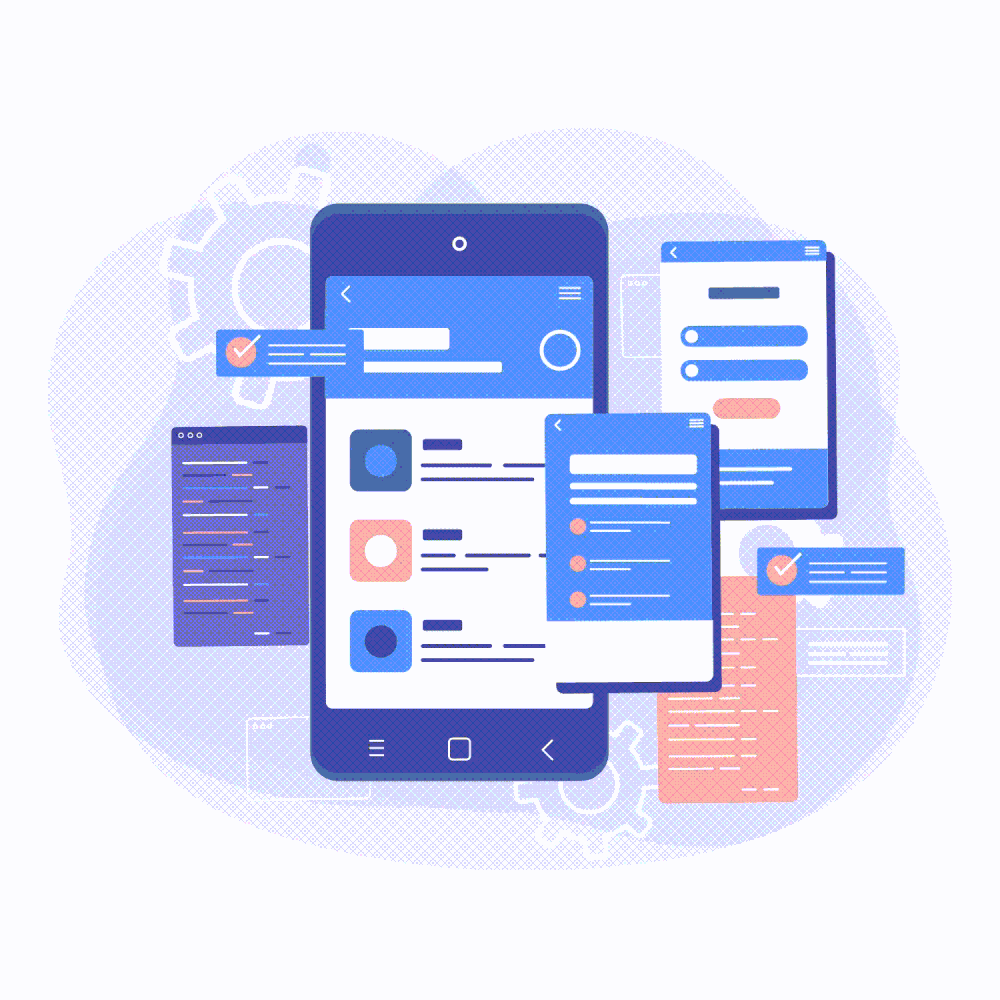Usually, employees get confused user experience design with usability and vice versa. But, the mobile app usability refers to the ease and simplicity of the access or effort it takes for a user to finish their goal.
To ensure mobile app user experience (UX) truly seamless, then everything from the onboarding to checkout requires to work perfectly. Usability is a vital factor of the user experience and plays a major role in experiences that are effective and efficient, pleasant to use, and interactive. Overlooking anything or considering it as simple as navigation on a mobile app can impact the UX otherwise.
In case your mobile app is useful and valuable to the user, however, requires a lot of time and effort, then user won’t bother learning how to use it.
Mobile App Usability Fundamental Requirements
There are multiple reasons contributing to a mobile app’s usability which impacting the overall efficiency and effectiveness in which a user achieves their goal. A user interface must have three important outcomes:
- It must be simple and easy for the user to become familiar with the UI
- It must be simple and easy for users to achieve their goal while using the app
- It must be error-free. In case your app doesn’t work to commence with, then the rest of your UX elements will not matter
The business world is getting dominated by smartphones, finding a way to interact and engage with customers is becoming increasingly important. While the user interface is a crucial part of the UX, usability must always take precedence. In case an app is aesthetically pleasing, however, difficult to use, then the overall user perception of your app is going to be negative as an outcome. Listed here are mobile app usability challenges that are often overlooked during the mobile app development:
Challenge # 1: Platform Usability
A common issue for mobile users is not having an app which works for their specific model of smartphone, which can be Android and iOS, for instance, are two different platforms. We can not simply clone iOS app for Android and vice versa. Android works entirely with the different set of design, programming, and user interface considerations. For instance, navigation for every platform differs potentially, like, iOS for one, doesn’t have a “back” button similar to Android.
Keeping this factor in mind, one must tailor the app to work within the native Android experience such that the users can interact intuitively. It’s a better idea to budget for this such that you ensure your app is optimized for the most common Android smartphones.
Challenge # 2: Provide Value Right Away
In case you wish new users to return to your app, you require to ensure that they discover the value early on, preferably in the onboarding process. In case you don’t convince them to return within the first week, then users are going to lose them forever. The market is saturated with several apps competing for the attention of the users hence ensure you offer value right from the beginning.
Challenge # 3: Simple Navigation
One of the core issues that users have while using mobile apps, particularity m-commerce ones, is poor navigation. This implies that while they are using the app, they face difficulty finding what they are looking for, and require to navigate too long to detect it.
When a user first downloads your app, they require to clearly understand how to navigate in context to complete their goal, purchasing a product, whether they are booking an appointment, or finding information. This depicts that your navigation must have as few barriers as possible. Several apps include unique features, however, struggle to fit them together in a way which makes sense for the user. The navigation must be comprehensible for the user such that they won’t end up lost on a random page.
While focusing on the usability, ensure that your products and/or services are extremely simple and easy to find. The more complicated it is for the users to navigate the app, the higher the rate of user abandonment.
Challenge # 4: Clear &Concise Content
It’s common to simplify content while designing for mobile. But, you need just enough content that is essential to the user in order to finish a goal. This is specifically true for a purchasing process. Consumers still need entire information to make their purchase, and withholding fundamental information will lead to a lower conversion rate. One must be tailoring user content for mobile, rather than copying it verbatim from the web. Having too much information in the mobile app will undoubtedly result in an unpleasant user experience with confused users digging to search what they’re searching for. Built it as simple and easy as possible for the user to consume your content with as little pinching and zooming as possible by expressing the information in a clear and the concise way.
Challenge # 5: Reducing the Number of Steps
Keeping simple and fewer steps, buttons, pages, and fields to input data, the better. Every time your user requires to finish an action, verify to see if there’s an easy way that would make their experience easier. Consider every action you need your user as an added barrier. The fewer steps you design, the closer your users are to completing their goal.
Ensure they store their billing and shipping information and then include it be automatically appended to their orders, without requiring to re-add it each time. Also, offer them with an accessible edit button during the checkout process such that they can easily change their billing or shipping info.
For m-commerce or retail apps, specifically, checking out can be frustrating. You require to type in your address, email address, confirm that you opted the right product, etc. all by using a small screen. One effective approach is to make it simple to create an account with a Facebook login. Design mobile app with a convenient guest checkout option will encourage users to make more purchases in less amount of time. Other important features to consider during development are using an autofill and large checkout buttons. These design and development components are going to amount to a seamless product promotion, purchase and overall satisfaction with the user experience.
Challenge # 6: Minimize Scrolling
Content prioritization is important for the usability of an app. Users must get most in case not all of the information they require to make a decision within the limits of their screen. Scrolling down is sometimes unavoidable and needed in a number of instances, however side scrolling is something which should definitely be averted. In case, a user requires to scroll sideways, it generally implies that valuable content is being hidden.
Challenge # 7: Consider Landscape Orientation
While building a mobile app, several people don’t consider landscape orientation as significant. A good mobile app must be designed for both portrait and landscape to accommodate for optimal usability and the user experience, specifically for an app which contains video content.
Challenge # 8: The User Testing & Feedback
The most vital thing we can do to test usability is to use mobile A/B testing platforms like Leanplum. A/B testing permits you to compare two or more variations of a specific app design or layout. For example, the user can test the potential effectiveness of buttons and how they distinguish in driving conversions. Find the design that layout does your users convert more with? Rather than guessing what users prefer in your mobile app, examine to validate these assumptions. To enhance mobile app usability, you cannot overlook and ignore testing. A mobile app’s success hinges on just one crucial thing: how users experience it! perceive it! The usability contributes directly to how a user experiences about your app whether negative or positive as they consider the simplicity and the ease of use, the perception of the utility, value, and effectiveness of the overall experience. Usability is what will support convert users into long-term customers, loyal, in turn, generating more revenue for your app.
About WebBee
At WebBee, we provide the customized app development, scalable, secure ERP integration tools, and pioneer services. Our capable novel strategies enable businesses via reaching out to various marketplaces with our cutting-edge integrated eSolutions. Our dedicated team works seamlessly for deploying and maintaining complicated business-specific integrations. Our core mission is to empower business-fit platform independent applications for collaborating and connecting marketplaces, at the global level.





